Trying to identify the hummingbird zipping around your yard?
Hummingbirds are one of the most fascinating creatures that you can find in your backyard. It really helps to know what species of hummingbirds live in Minnesota.
While the list below contains all the usual hummingbirds found in Minnesota, it’s possible to find a vagrant species of hummingbird that’s not native to Minnesota. This is rare but not unheard of.
The following legend can be used for each hummingbird species map to determine what time of year you can see each hummingbird in your area.
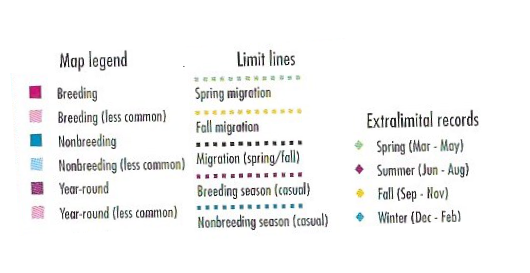
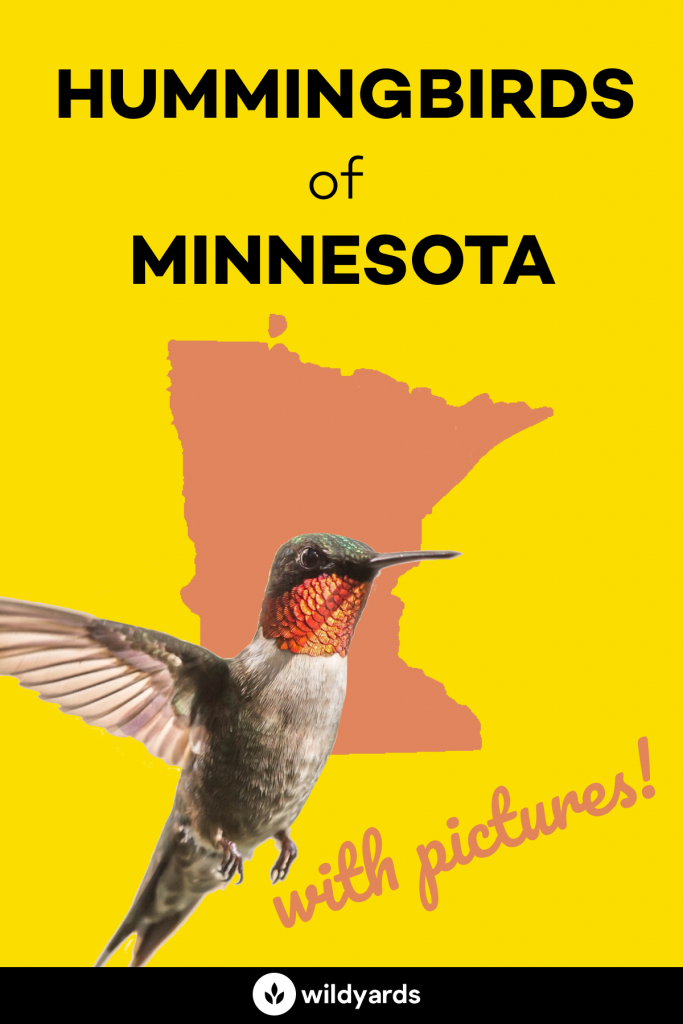
The 5 Hummingbird Species of Minnesota
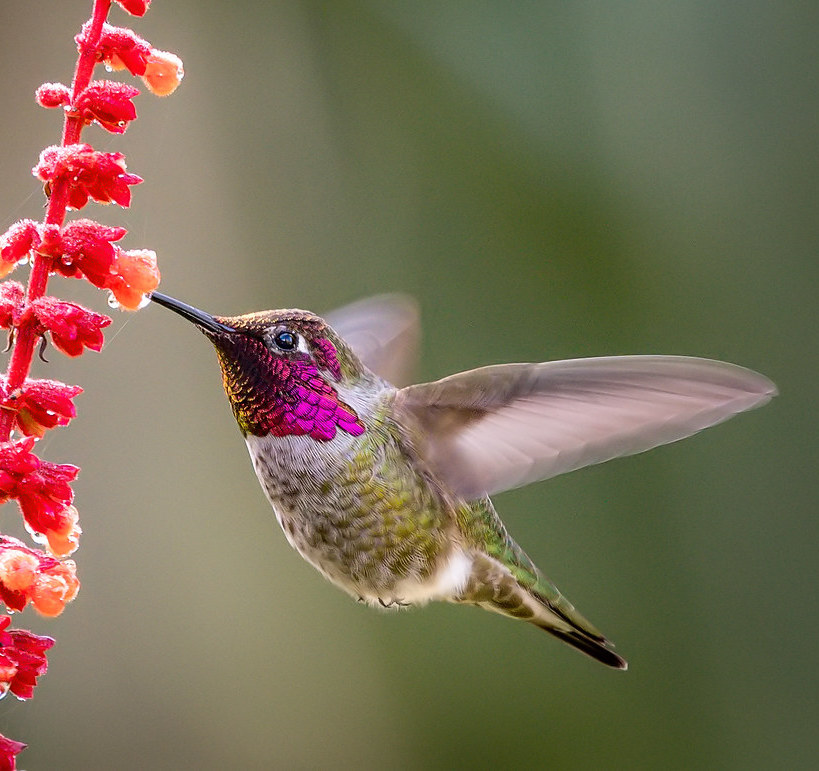
Anna’s Hummingbird
Calypte anna
Order: Apodiformes
Family: Trochilidae
Size: 3.5 – 4in (9-10cm)
Overview
Originally a native to California, the Anna’s Hummingbird is quite adaptable allowing it to expand its range northward and eastward chasing exotic flowers in urban gardens. It’s named in honor of Anna Massena, the Duchess of Rivoli and a generous patron of science. During the winter Anna’s hummingbird has been observed eating insects such as gnats and even eating sand and ashes – likely to provide essential minerals.
How to Identify
Anna’s Hummingbird is a medium-sized hummingbird with a medium sized straight black. bill. The male sports a red gorget. Unlike the Black-Chinned and Costa’s Hummingbird, Anna’s Hummingbird normally holds its tail still while hovering.
Anna’s Hummingbird Range & Migration Map
Anna’s Hummingbird is a common resident in California but has extended its range north towards the western coast of Washington and southeast to southern part of Arizona. It’s a rare winterer of western Texas.
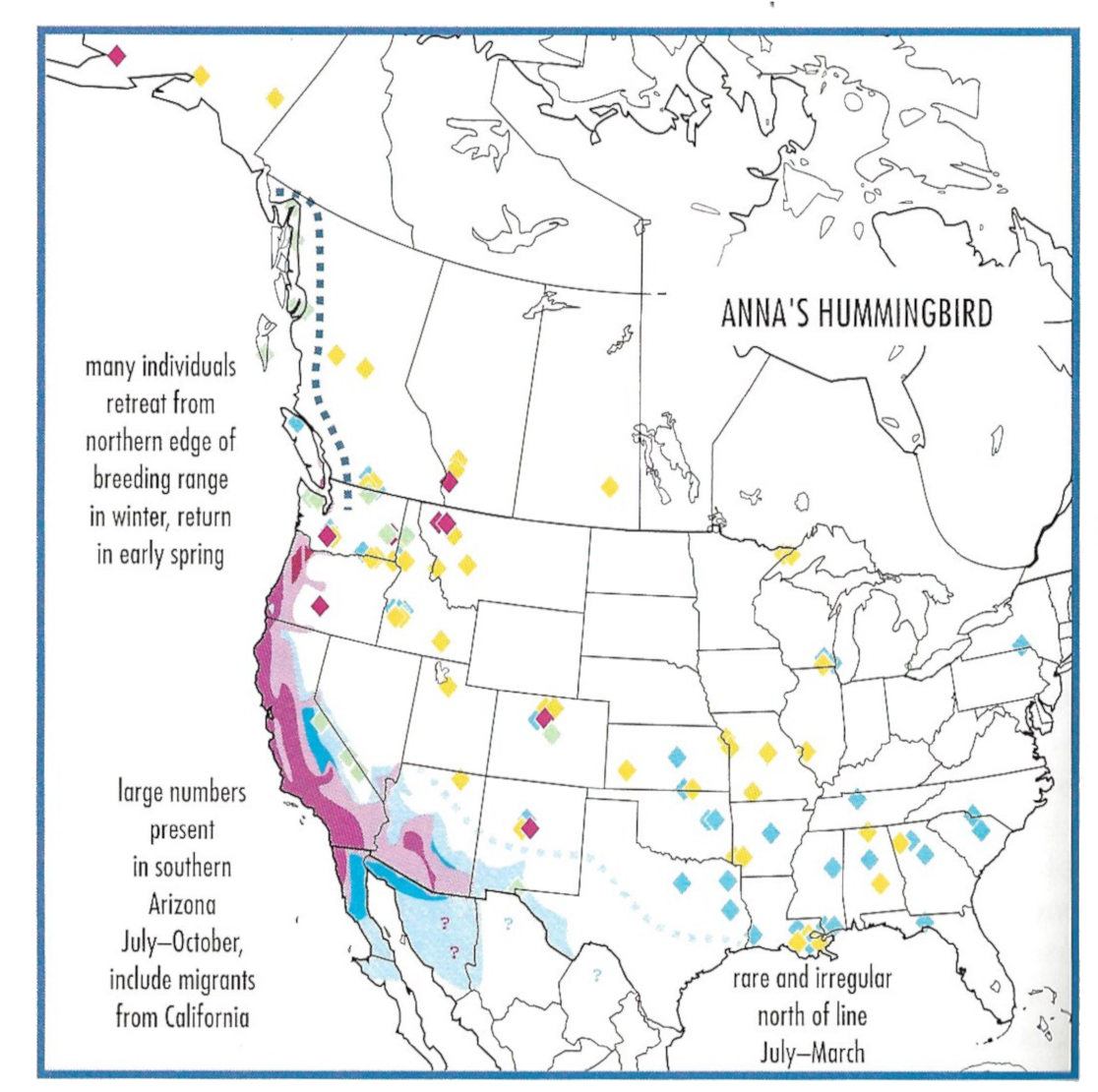
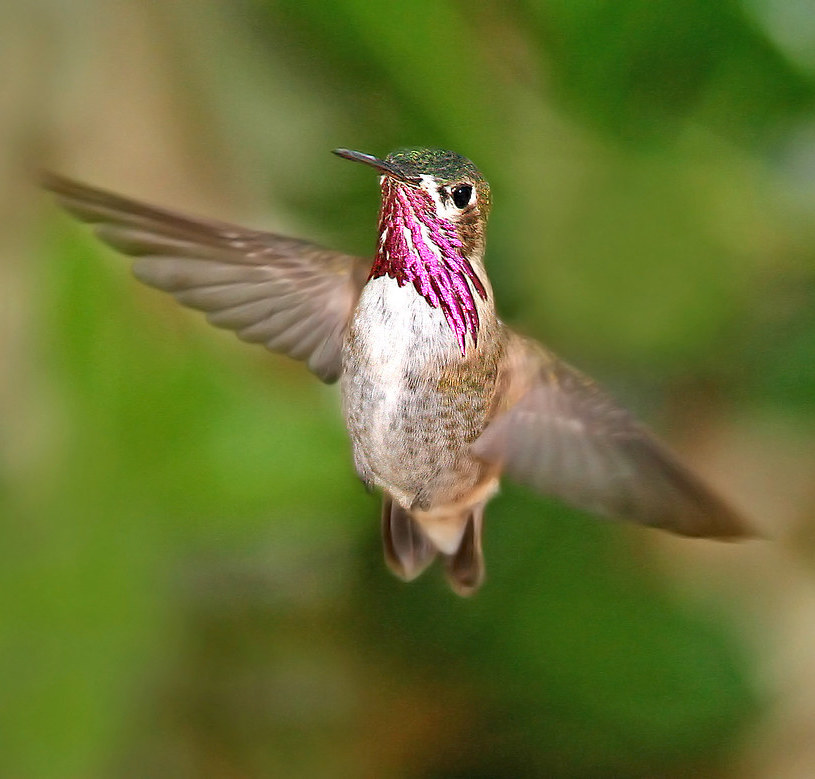
Calliope Hummingbird
Stellula calliope
Order: Apodiformes
Family: Trochilidae
Size: 2.75 – 3.25in (7.5 – 8cm)
Overview
The Calliope Hummingbird is the smallest breeding bird in the United States. In fact, the male weighs less than a penny. The Calliope’s species name is Greek for “beautiful voice” which is rather ironic given that this hummingbird has limited vocal ability. This hummingbird prefers habitats in conifer forests and older growth following forest fires.
How to Identify
The Calliope Hummingbird is a really small bird with a short black bill and short tail. The male sports a red to purple gorget with a white background. It’s very small size should distinguish it from other hummingbirds rather easily.
Calliope Hummingbird Range & Migration Map
The Calliope Hummingbird breeds in the northwestern states starting from northern California. During the winters, it can be found in the states along the Gulf of Mexico. During migration season, they can be found following both the Rocky Mountain and Pacific ranges.
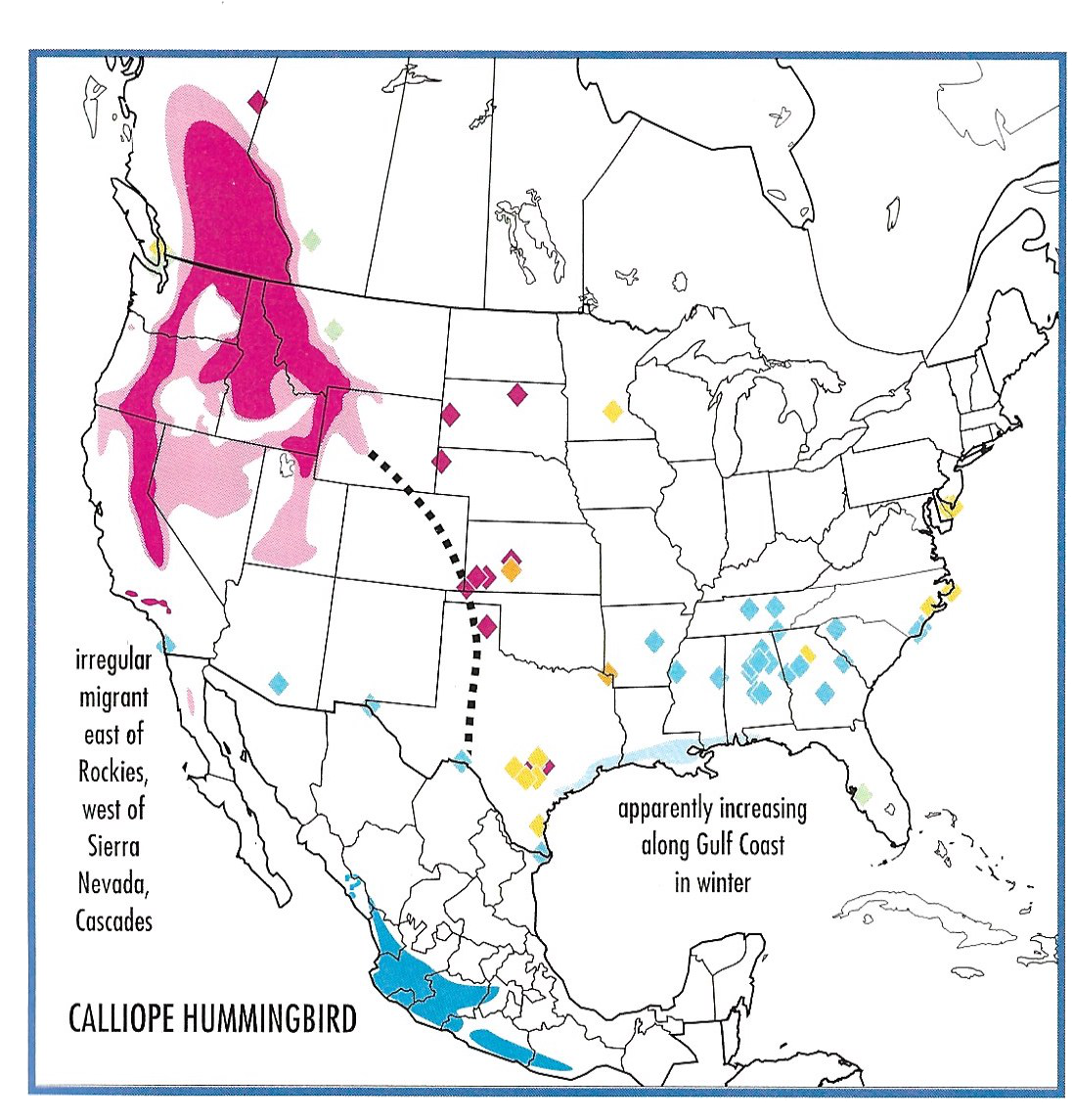
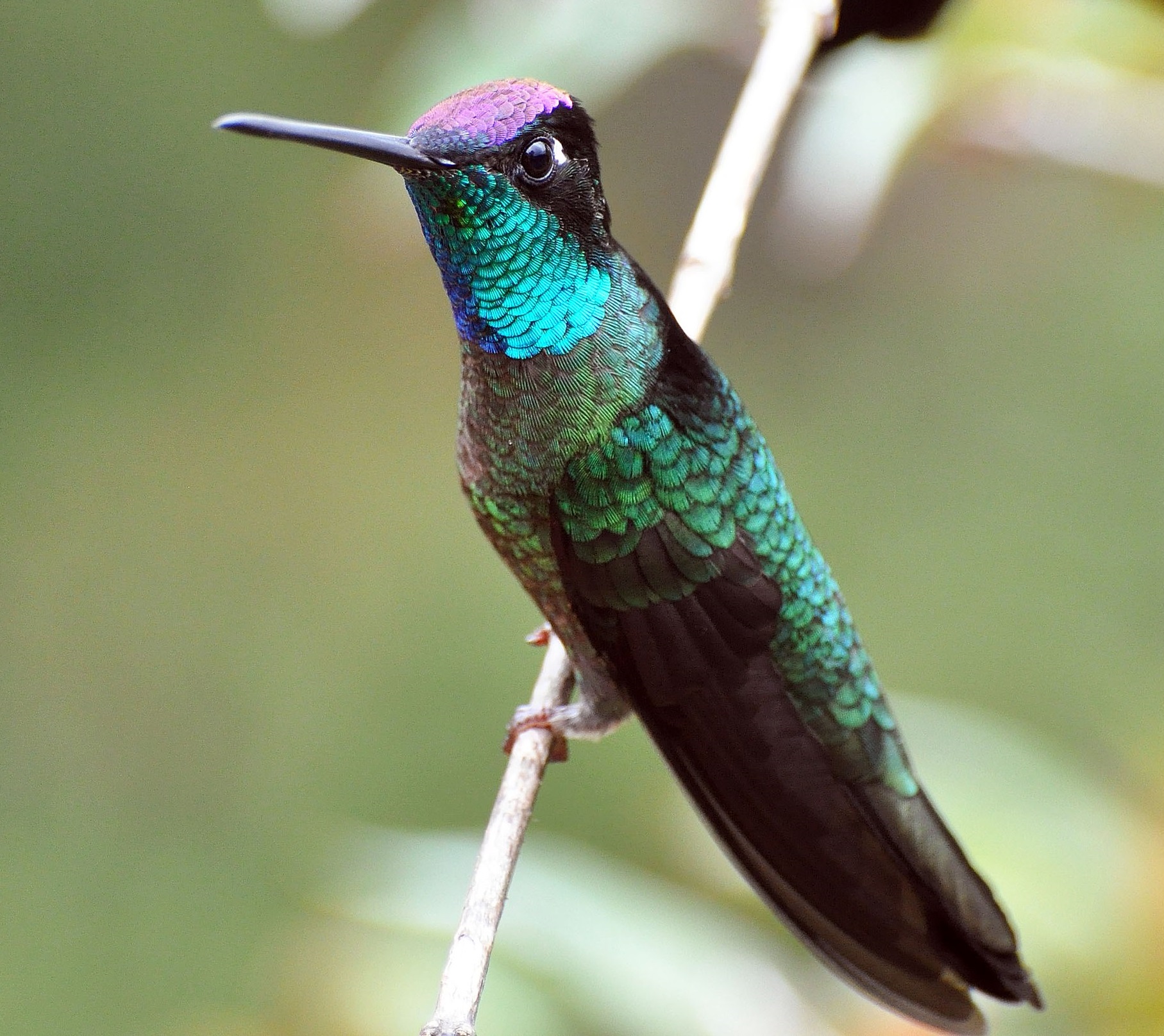
Rivoli’s Hummingbird
Eugenes fulgens
Order: Apodiformes
Family: Trochilidae
Size: 4.3 – 5.5in (11 – 14cm)
Overview
Like Anna’s hummingbird, Rivoli’s hummingbird is also named after a member of the Rivoli – specifically, the Duke of Rivoli, Anna’s husband. This species used to be called the Magnificent Hummingbird, but was recently renamed to distinguish itself from another species that has a blue gorget as opposed to the purple one that Rivoli’s hummingbird has. This particular avian is well-loved for its stunning colors in green and purple, and for its long body! It has one of the longest bills in the hummingbird species, and its heart rate can reach a blistering pace of 1,200 bpm!
How to Identify
Rivoli’s hummingbirds are wildly colored in waves of green, blue and purple, with touches of yellow. They are fairly large as hummingbird species go, and they are easy to spot as they have quite long, tall statures compared to others that are native in the US!
Rivoli’s Hummingbird Range & Migration Map
Rivoli’s hummingbirds breed primarily in the mountain ranges of western Texas, southeastern Arizona, and south-central New Mexico. The males are highly nomadic and banded birds have traveled hundreds of miles in a season. Sightings of this species can be seen in Colorado (May to October), Alabama (September to February), Arkansas (July), California (April), Georgia (winter), Minnesota (July), Nevada (June), Utah (July), Wyoming (June to July).
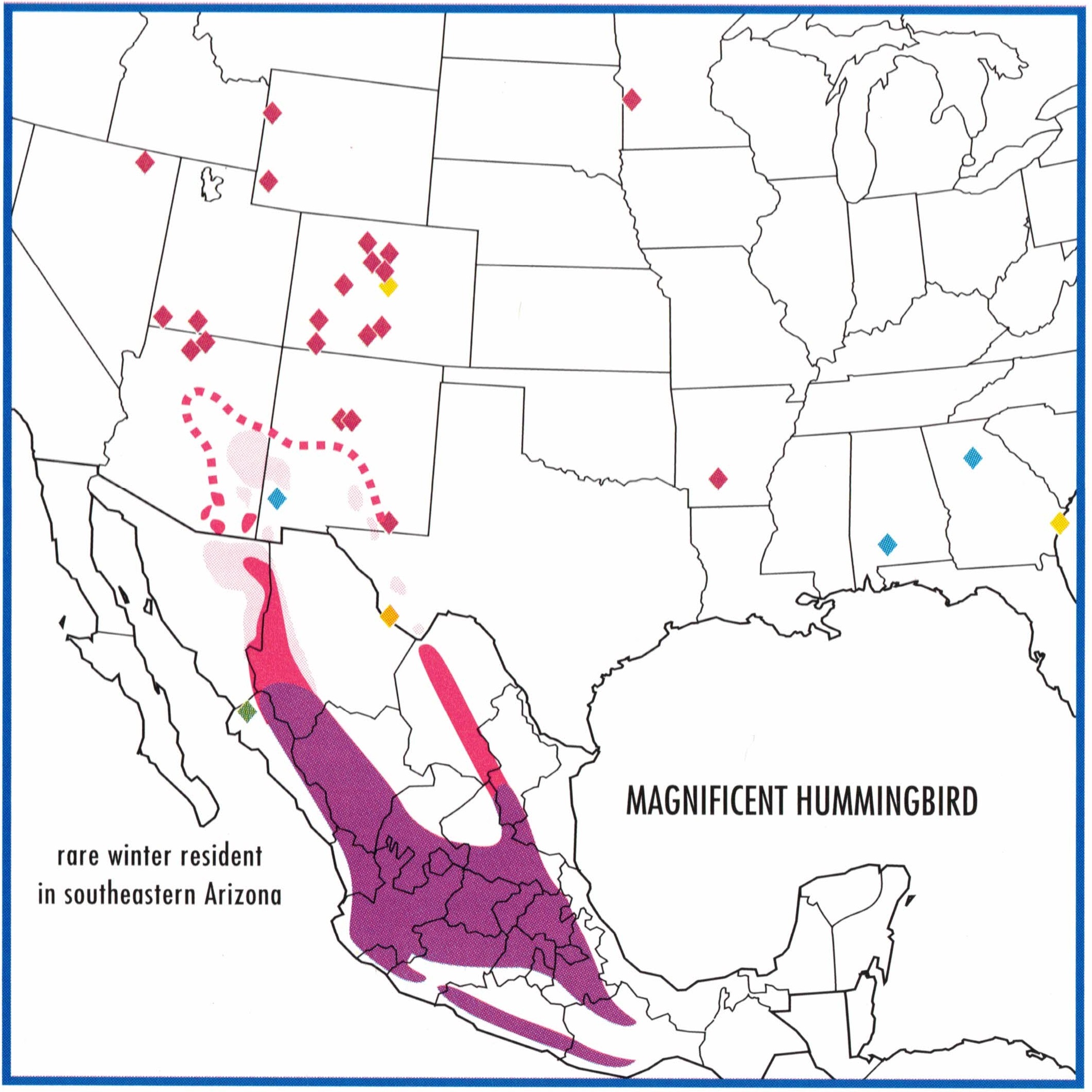
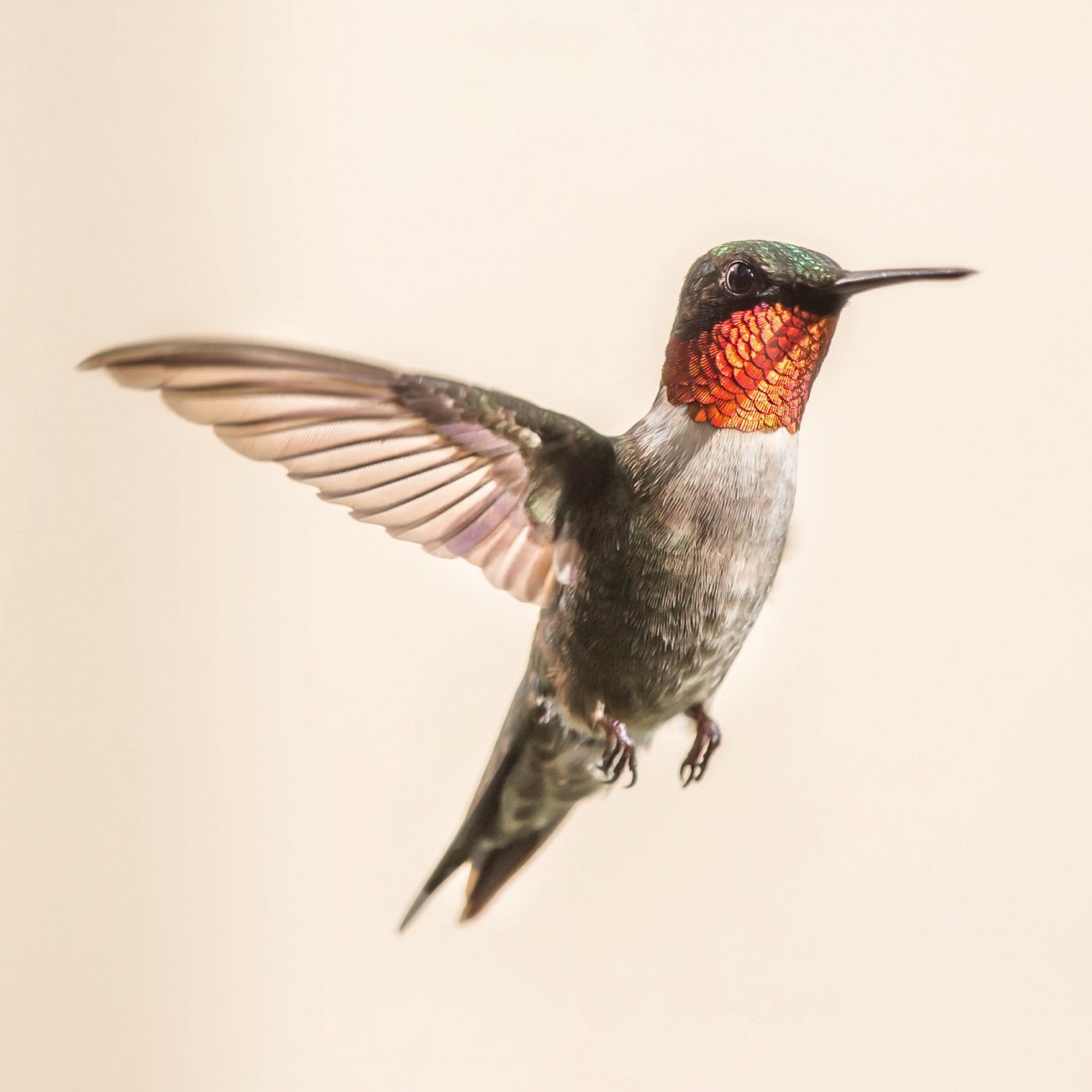
Ruby-Throated Hummingbird
Archilochus colubris
Order: Apodiformes
Family: Trochilidae
Size: 3.25 – 3.75 in (8.5 – 9.5cm)
Overview
The ruby-throated hummingbird is one of the most commonly found hummingbirds of the United States. In fact, it’s the only one that breeds east of the Mississippi River. To reach these eastern breeding grounds, the Ruby-Throated Hummingbird takes a perilous route of flying over 500 miles non-stop over the Gulf of Mexico.
How to Identify
This hummingbird is on the smaller side. The male sports a handsome scarlet gorget and a black chin strap which distinguishes it from the Anna’s and Broad-Tailed hummingbirds.
Ruby-Throated Hummingbird Range & Migration Map
The Ruby-Throated hummingbird breeds in eastern United States and prefers hardwood, pine and mixed forests starting in the spring and retreats to Mexico in the winter.
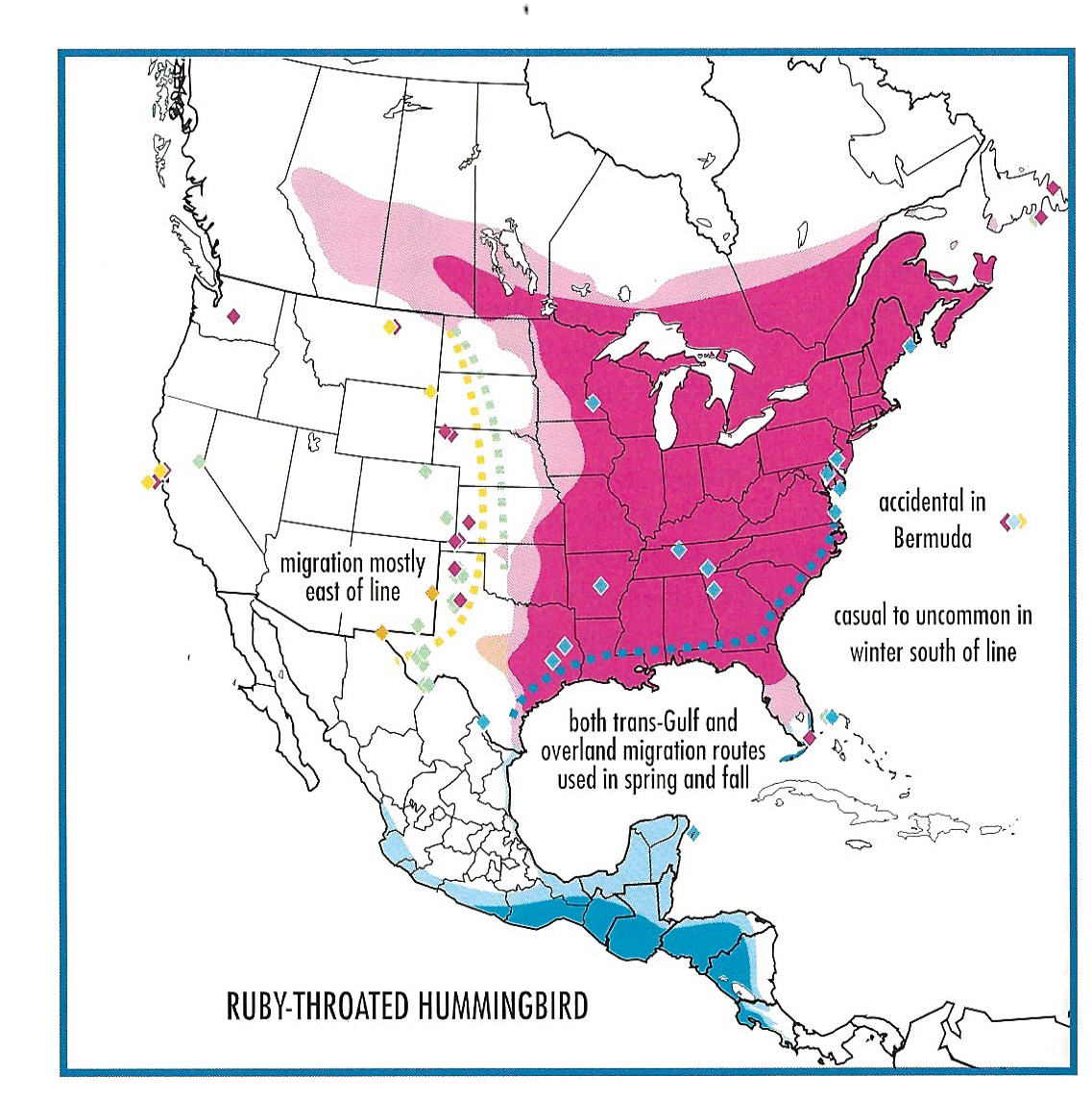
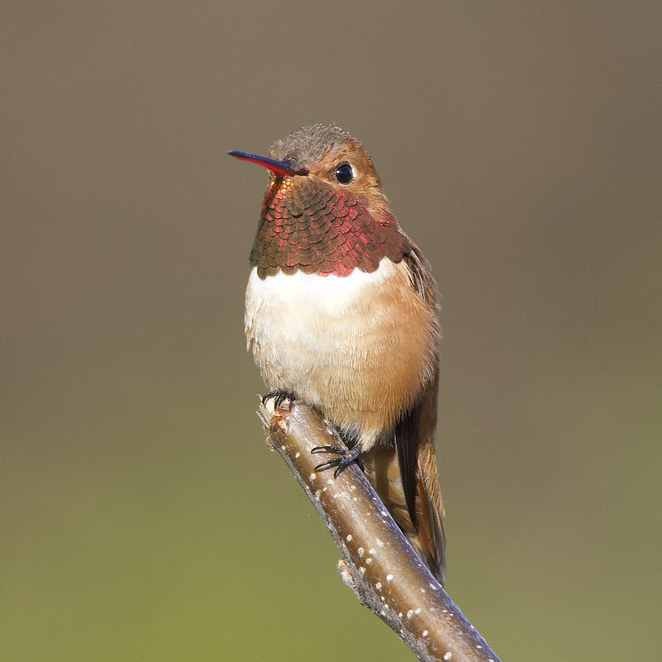
Rufous Hummingbird
Selasphorus rufus
Order: Apodiformes
Family: Trochilidae
Size: 3.5 – 4in (9 – 10cm)
Overview
The Rufous Hummingbird breeds farther north than any other hummingbird in the United States. It’s an aggressive species which makes it an unwelcome guest among hummingbird feeders. This hummingbird is an important part of the Pacific Northwest ecosystem, acting as a pollinator where the insects are at a disadvantage due to their cold-bloodedness.
How to Identify
The most distinguishing feature of the Rufous Hummingbird is the male’s rufous gorget that’s hard to miss. It’s a relatively small hummingbird with a short black bill. With the rufous plumage and aggressive behaviour, you’ll have no problem identifying male Rufous Hummingbirds.
Rufous Hummingbird Range & Migration Map
The Rufous Hummingbird breeds from the southeastern tip of Alaska down to the northern most parts of California, going as far east as Montana. During the winter, it migrates down to the Gulf of Mexico states.
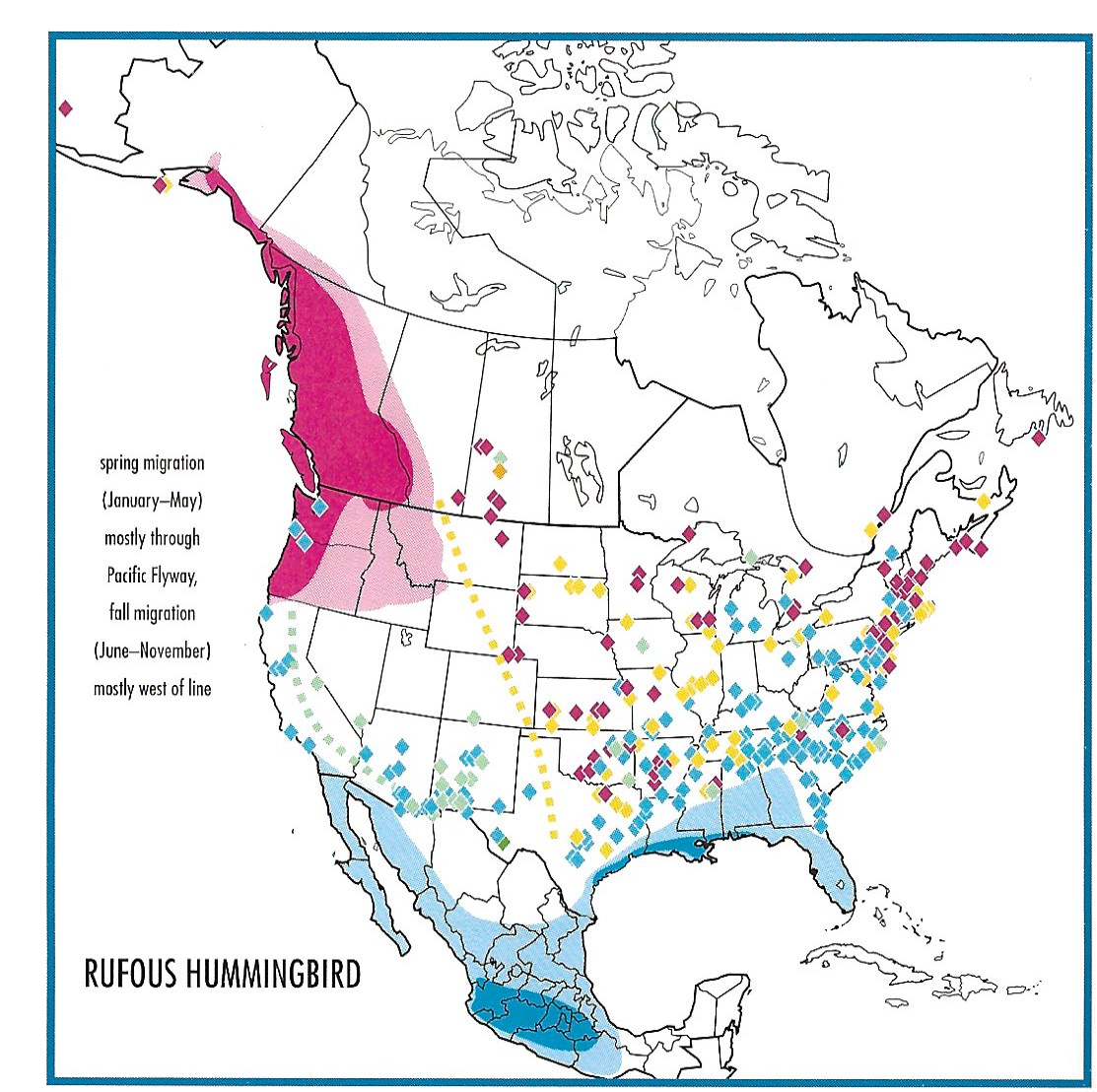
How to Attract Minnesota Hummingbirds to Your Yard
Want to see more hummingbirds in your backyard?
We have all the information you need on our site to help you do that. First, we recommend you read our guide on how to attract hummingbirds to your yard. That’ll give you the basics of what’s required to attract hummingbirds.
Then, we’d recommend reading our buyer’s guide on choosing the best hummingbird feeder. Setting up a hummingbird feeder or two is the best way to guarantee that hummingbirds will visit your yard.
There are a bunch of other ways to attract hummingbirds such as getting a bird bath and planting native flowers that attract hummingbirds.
All State Hummingbirds
Want to see what hummingbirds species are found in other states? Here’s our complete list of hummingbirds found in each state:

Hello Robert, it’s there a way for me to send you a couple of pictures of the hummingbirds that have been coming to my yard this summer? I am trying to ID them but I don’t think they are in this list.
Thank you 😊
Hi Marcela,
You can send us a message on Facebook here: https://www.facebook.com/thewildyards.
I’ll reply as soon as I can!